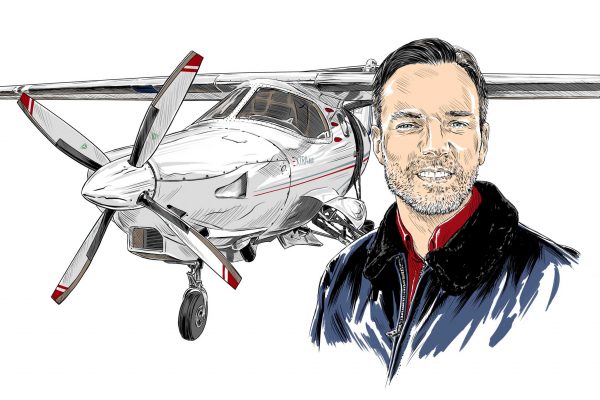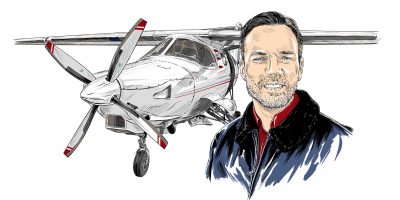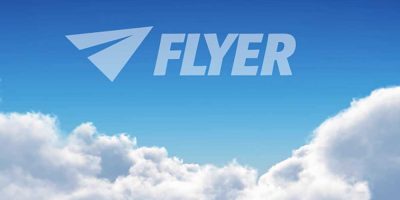Some good news for General Aviation that seemed to slip out largely unnoticed in March was the long-awaited implementing regulation for EASA Part-M ‘Light’. M-Light sits within the wider package of EASA maintenance and continued airworthiness regulations and covers aeroplanes up to 2,730kg MTOW and helicopters up to 1,200kg that carry not more than four occupants. Sailplanes and balloons are also covered. The aim of M-Light is to bring a more proportionate system for the regulation of maintenance in GA.
M-Light covers the applicable aircraft when not used by a ‘Licensed Air Carrier’ – essentially this means all operations other than airlines requiring licensing under Regulation (EC) No 1008/2008. So non-commercial operations, flight training and the various commercial operations not requiring an airline licence are within scope of M-Light.
Alongside M-Light there is a new organisational approval aimed at GA maintenance organisations. ‘Part-CAO’ introduces the Maintenance and Airworthiness Management Organisation – essentially combining the former Part-M Subpart-F (Maintenance) and Subpart-G (CAMO) approvals. It allows organisations to maintain and/or manage aircraft up to 5,700kg MTOW. A reorganised ‘Part-CAMO’ remains in place for organisations overseeing aircraft above 5,700kg.
“This approach should bring greater flexibility to GA maintenance”
On the aircraft maintenance programme side, M-Light extends the provision for the programme to be declared by the owner if the aircraft is not used for commercial operations. The Light Aircraft Maintenance Programme (LAMP) therefore disappears as the default CAA approved programme, something that happened for 1,200kg aeroplanes a few years ago. All maintenance programmes are now either declared by the owner or can still be produced under contract with a Part-CAO or Part-CAMO organisation. For commercial operations a CAO or CAMO airworthiness contract is required, and the programme needs to be approved by the contracted organisation.
There is not really any difference in the maintenance requirements between commercial and non-commercial, but a CAO approved programme needs to justify deviations from manufacturer recommendations, whereas an owner-declared one for non-commercial operations does not. Either way, the aircraft maintenance programme must comply with the ‘Minimum Inspection Programme’ (MIP) provisions as contained in M-Light and any mandatory items from the manufacture or design approval holder. The option to follow manufacture recommendations entirely also remains.
Overall this approach should bring greater flexibility to GA maintenance. Some people have been quick to point out that the MIP specifies maintenance intervals of 100 hours or Annual checks (whichever comes sooner), whereas the LAMP standard was 50 hours, 150 hours and Annual. Depending on the utilisation profile of the aircraft this could help or hinder, so I think this issue should be monitored to see whether the 100-hour check is proving onerous. Under FAA private rules only the Annual check is required, with the 100-hour only coming in with what we would know as commercial operations.
M-Light also gives more privileges to individual certifying staff – aircraft under M-Light and when used non-commercially can be maintained without the need for an approved organisation. An engineer with the relevant privileges can carry out the maintenance tasks and issue the Airworthiness Review Certificate for the aircraft. For commercial operations an organisation needs to be involved, which typically would be the Part-CAO contracted organisation.
Now as you will have noted, M-Light specifies certain requirements for ‘commercial operations’. The definition of ‘commercial’ in this context is the normal EASA one: ‘Any operation of an aircraft, in return for remuneration of other valuable consideration, which is available to the public or, when no made available to the public, which is performed under a contract between an operator and a customer, where the latter has no control over the operator’.
Despite its apparent complexity I find it a reasonable definition – essentially a scenario in which someone pays an operator to operate a flight in return for remuneration.
Questions have been raised over training organisations (ATOs and DTOs) and when the requirement applies to contract a Part-CAO organisation. Essentially it applies to training organisations run on a commercial basis. For example, a group established on a non-profit basis that provides flight training to its members would not be caught by the requirement and similarly neither would a pilot-owner completing training in their own aircraft under the auspices of an ATO or DTO, assuming the owner retains responsibility for the airworthiness of the aircraft and is not leasing the aircraft to the organisation for other customers to train in. Pure self-fly hire should not count as commercial either, which happens to mirror the FAA approach.
Another discussion point is time between overall (TBO) periods for engines – under the LAMP regime aircraft being used commercially or for self-fly hire could go to 20 per cent over recommended TBO but no more, with indefinite on condition running only allowed for private operations. This is an area in which accepted practice may need to develop a bit – under M-Light there is no hard TBO limit for commercial operations or self-fly hire, but programmes approved for commercial operations must justify deviations from manufacturer recommendations.
More information:
caa.co.uk/Part-ML




